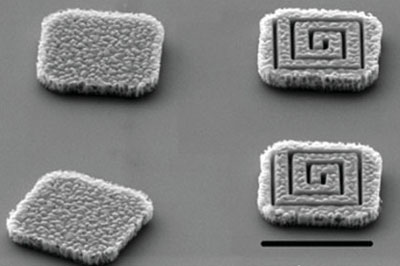FGF signal-dependent segregation of primitive endoderm and epiblast in the mouse blastocyst.
Primitive endoderm (PE) and epiblast (EPI) are two lineages derived from the inner cell mass (ICM) of the E3.5 blastocyst. Recent studies showed that EPI and PE progenitors expressing the lineage-specific transcriptional factors Nanog and Gata6, respectively, arise progressively as the ICM develops. Subsequent sorting of the two progenitors during blastocyst maturation results in the ormation of morphologically distinct EPI and PE layers at E4.5. It is, however, unknown how the initial differences between the two populations become established in the E3.5 blastocyst. Because the ICM cells are derived from two distinct rounds of polarized cell divisions during cleavage, a possible role for cell lineage history in promoting EPI versus PE fate has been proposed. We followed cell lineage from the eight-cell stage by live cell tracing and could find no clear linkage between developmental history of individual ICM cells and later cell fate. However, modulating FGF signaling levels by inhibition of the receptor/MAP kinase pathway or by addition of exogenous FGF shifted the fate of ICM cells to become either EPI or PE, respectively. Nanog- or Gata6-expressing progenitors could still be shifted towards the alternative fate by modulating FGF signaling during blastocyst maturation, suggesting that the ICM progenitors are not fully committed to their final fate at the time that initial segregation of gene expression occurs. In conclusion, we propose a model in which stochastic and progressive specification of EPI and PE lineages occurs during maturation of the blastocyst in an FGF/MAP kinase signal-dependent manner.
===
初期胚の細胞分化の様子やシグナルの関与を細かくみた秀作。
IntroやDisの情報もよくreviewされてて有用。
●8cell stageの細胞の一つにH2B-RFPとmembrane-RFPを入れて、その後の分裂の様子をライブでフォロー(Fig1, Table1)。primary inside cellとsecondary inside cellとの寄与度は差がないことを証明。
● FGF/MAPKシグナルのinhibitorをE2.5~4.5の間のさまざまな時間でtreatして、どこからが不可逆なポイントの検討、PE/EPIへの分化の影響などを検討。(Fig2-4)→E4.5で最終的にplasciticyが失われるが、それまではNanog/Gata6のどちらかをふらふらしている。
Gata4の発現がcritical?(Discussion)
●High-doseなFGF4(+heparin)がEPI formationのブロックに十分であることを証明(Fig4, 5)
●PE(Gata6+)/EPI(Nanog+)の細胞が"pepper-salt pattern"でICM内に散在していることから、stochasticなメカニズムでヘテロな細胞集団が生じた後、どちらかのlineageにcommitすると考えられる(Discussion)←ここの決定機構は??
●inner cell-outer cellのcontactについて、cell表面のcortical tensionの寄与?(Fig1D)(
Ref.)
●FGFR/MEK inhibitorがtrophoectodermの細胞運命に影響を与えていない。
ICM内のFGF4の発現はOct4/Sox2による(Ref.
1&
2)
===
過去の報告のまとめ
●ICM内の細胞でのtranscriptomeの揺らぎ、position independent?
●NanogとGata6の発現は、mutually exclusive
●FGF4、FGFR2、Grb2、MAPKなどのシグナルの寄与、過去文献(
Hamazaki et al. MCB 2006など、次の記事でまとめ)→Ffg4, Fgfr2, Grb2KOマウスはPEの形成が完全に失われてEPIになる、DN-FGFRをESに入れるとPE形成能が失われる、一方でexogenous FGFはPE形成をenhanceしない(今回の論文と結論が異なるので条件が違う?)、PTPase inhibitor(vanadate)やCA-MAPKはPE形成を促進する、など
●8細胞期のpolarizationと8-16細胞期のsymmetric-asymmetric division (
Ref.)
●平均のouter:inner cellの割合は10.8:5.2







